Few things send an icy chill down your spine as an automotive writer like watching a pro flawlessly execute a stunt you’re about to attempt in front of your peers. Yet, as I stood on the edges of an ice track in Livigno, Italy, anxiously awaiting my turn to try and slide a Quattroporte Trofeo for the first time, that’s precisely how I felt. Maserati’s factory driver put on an impressive display of car control, effortlessly drifting a base four-cylinder Levante with tremendous speed. After a few laps, he pulled over, hopped out, and asked a terrifying question: “Well, who wants to go first?”
I find myself halfway across the world in the Italian Alps, standing between towering snowy mountain peaks surrounded by cross-country skiers and an array of picturesque wooden cabins. I’m here partly for the launch of the new one-of-103 Ghibli 334 Ultima and Levante Ultima, but as their name translates to “last,” I’ve also come to drive what will most likely go down as the final V8-powered Maseratis ever.
In just a few weeks, the Ghibli and Quattroporte will go out of production, taking their Prancing Horse-sourced twin-turbocharged 90-degree V8 with them. And while the Levante will carry on, its top eight-cylinder Trofeo trim will not. For the first time since 1959, Maserati won’t offer a spicy eight. From here on out, the Italian carmaker plans to focus solely on its Nettuno V6 and its upcoming range of Folgore battery-electric cars.
On the eve of this great engine’s demise, I strapped into the driver’s seat of a bright red Quattroporte Trofeo and awaited the go-ahead to enter the snowy circuit. The rack, a quarter-mile-long loop with back-to-back bends and essentially no straights, is just a field for most of the year. As the temperatures drop, however, it morphs into the Ghiaccodromo for the winter months.
At this point, it’s probably worth mentioning that I had never driven on snow before this trip. I grew up in Puerto Rico and now live in Los Angeles, two places where loose surface driving is hard to come by. Doubly concerning, I had only learned to drift a month earlier in a much smaller, less powerful BMW M2. But it didn’t matter; I was determined to hang the QP’s tail out come what may.
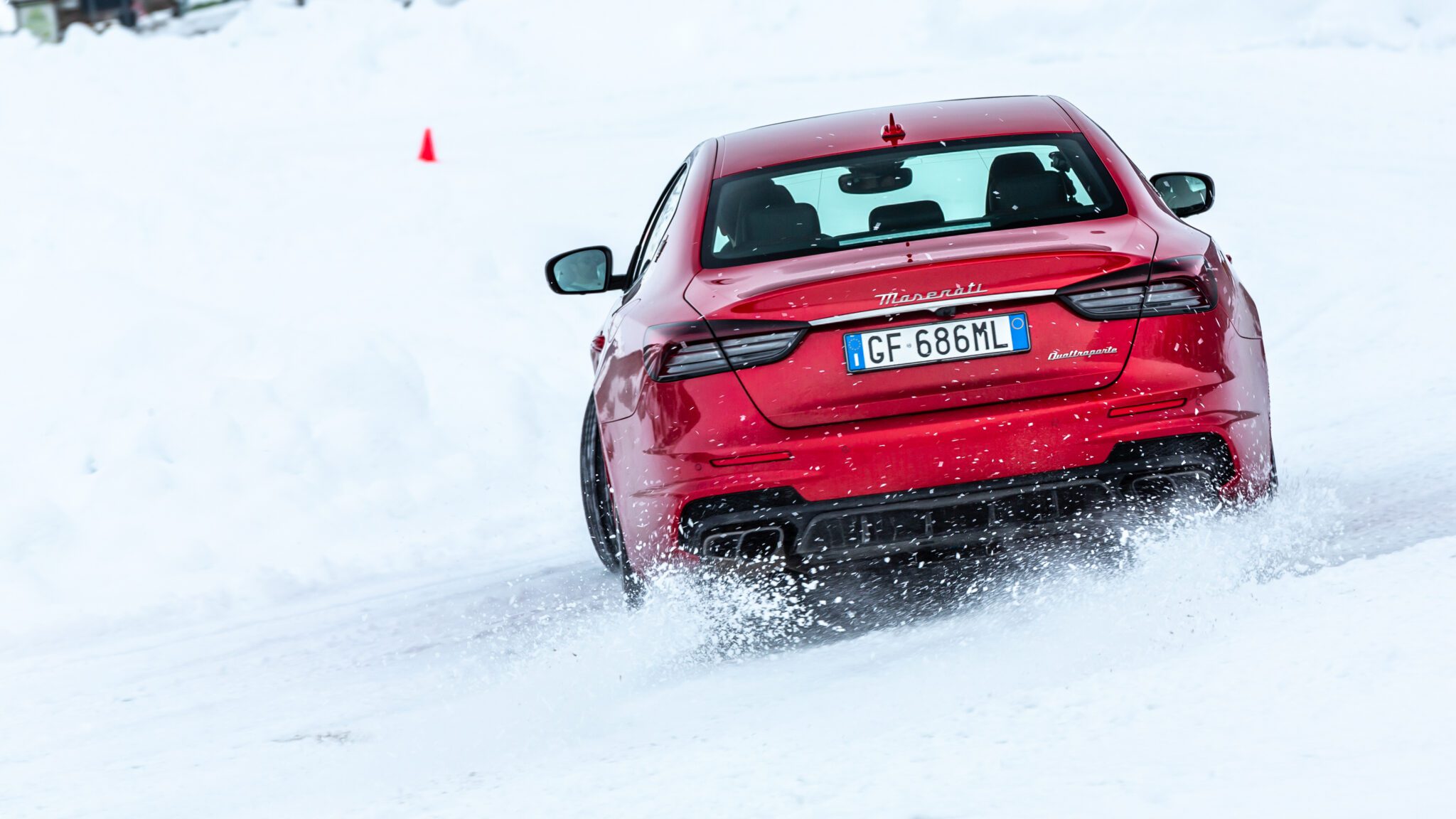
I made it only a few feet onto the track when Maserati’s pro driver came on over the radio to remind us that we should complete our first few laps with traction control, and I’m grateful I did. Despite this Trofeo having to put down 572 horsepower on a sheet of ice loosely covered by a light layer of snow, it did so masterfully. I tried unsettling the QP with sudden jabs of full throttle, but it wouldn’t budge. Despite the aggressive inputs, the system intervened long before its rear could step out. It’s impressive, but I wanted to find the Trofeo’s limits.
With stability and traction control fully disengaged, I entered my second lap. A light dab of throttle made the rear pivot as the QP’s 3.8-liter V8 spun up and emitted a throaty growl from its quad exhaust pipes. However, its back end came around with quite a delay. I had expected it to snap somewhat quickly, but this sedan’s lengthy wheelbase meant there was plenty of time to catch the slide. Although its steering rack is slow compared to its newer rivals and requires more turns lock-to-lock, its laid-back nature makes it more forgiving when you’re sideways.
The same can be said of the Trofeos throttle response. Even in its most aggressive Corsa mode, you don’t get the instant reaction of a BMW M8 Competition, making it easier to modulate the throttle. The result is a big, heavy sedan that settles nicely into a powerslide, making connecting drifts between these tight back-to-back bends effortless.
Its long gear ratios mean upshifting isn’t necessary to complete a lap. With tons of torque at low revs ready to initiate a slide, there’s plenty of tach left to sustain it. And thanks to its 4,409-pound curb weight, you don’t need to tap its brakes to change directions. Wait for the forces generated by its heft to snap you around, and you’re off to the next corner. It’s perfectly suited to the sport.
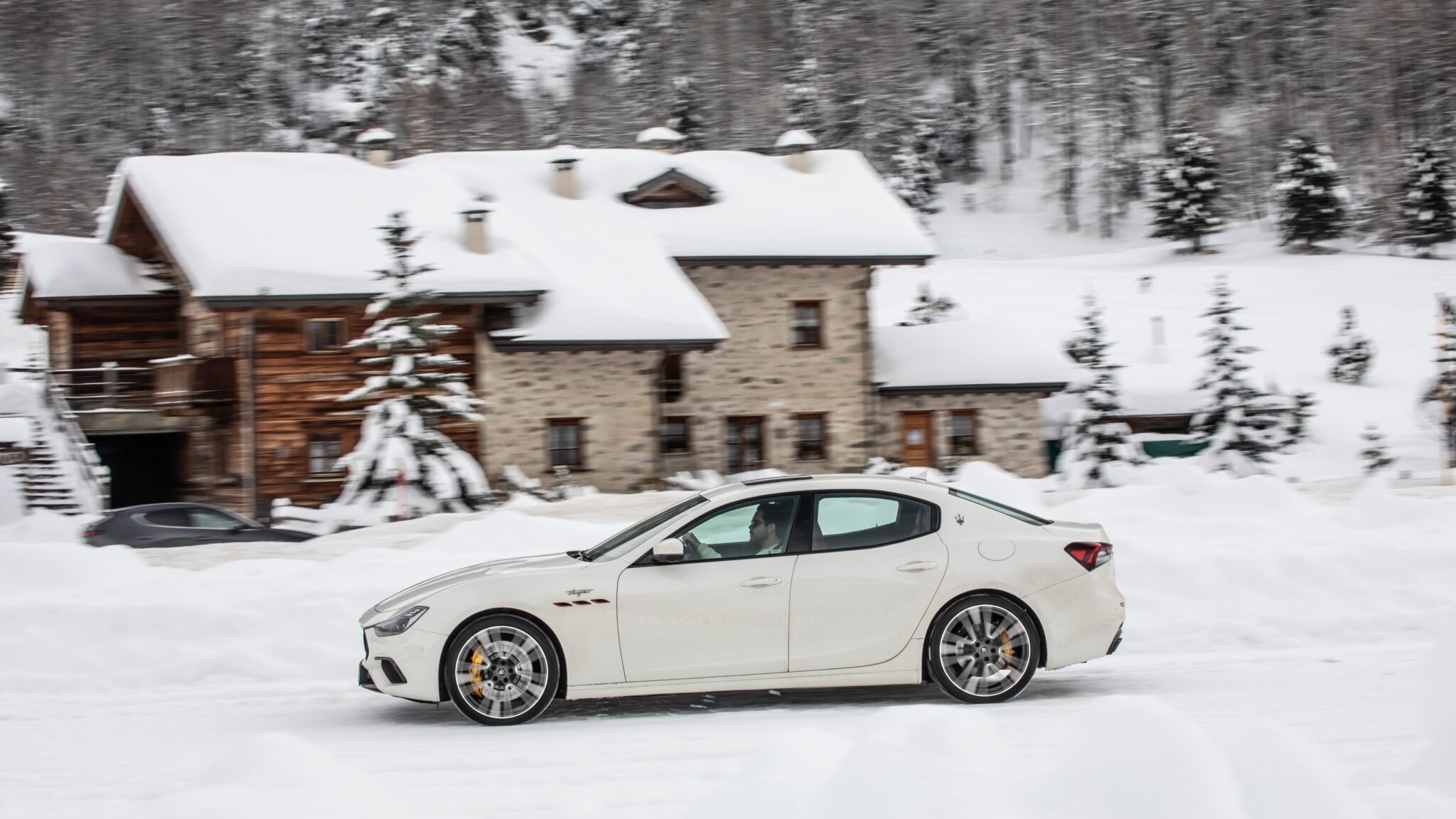
With over a dozen laps completed, I hopped out of the QP and into its smaller sibling, the Ghibli Trofeo. Although Maserati’s entry-level sedan may look nearly identical to its larger offering, it’s 11 inches shorter and about 100 pounds lighter, which, as you’ll soon learn, profoundly affects its handling characteristics.
Coming into turn one, I gave the Ghibli the same gentle dab of gas I had given the QP only minutes earlier, but its back came around twice as quickly. It was so fast that I nearly spun it on my first try. Despite its dimensional differences, the Ghibli is almost mechanically identical to the QP, meaning you get the same lax throttle response and slow steering rack. I had only a split second to catch the unsettled sedan, which requires much quicker inputs to steady while sideways.
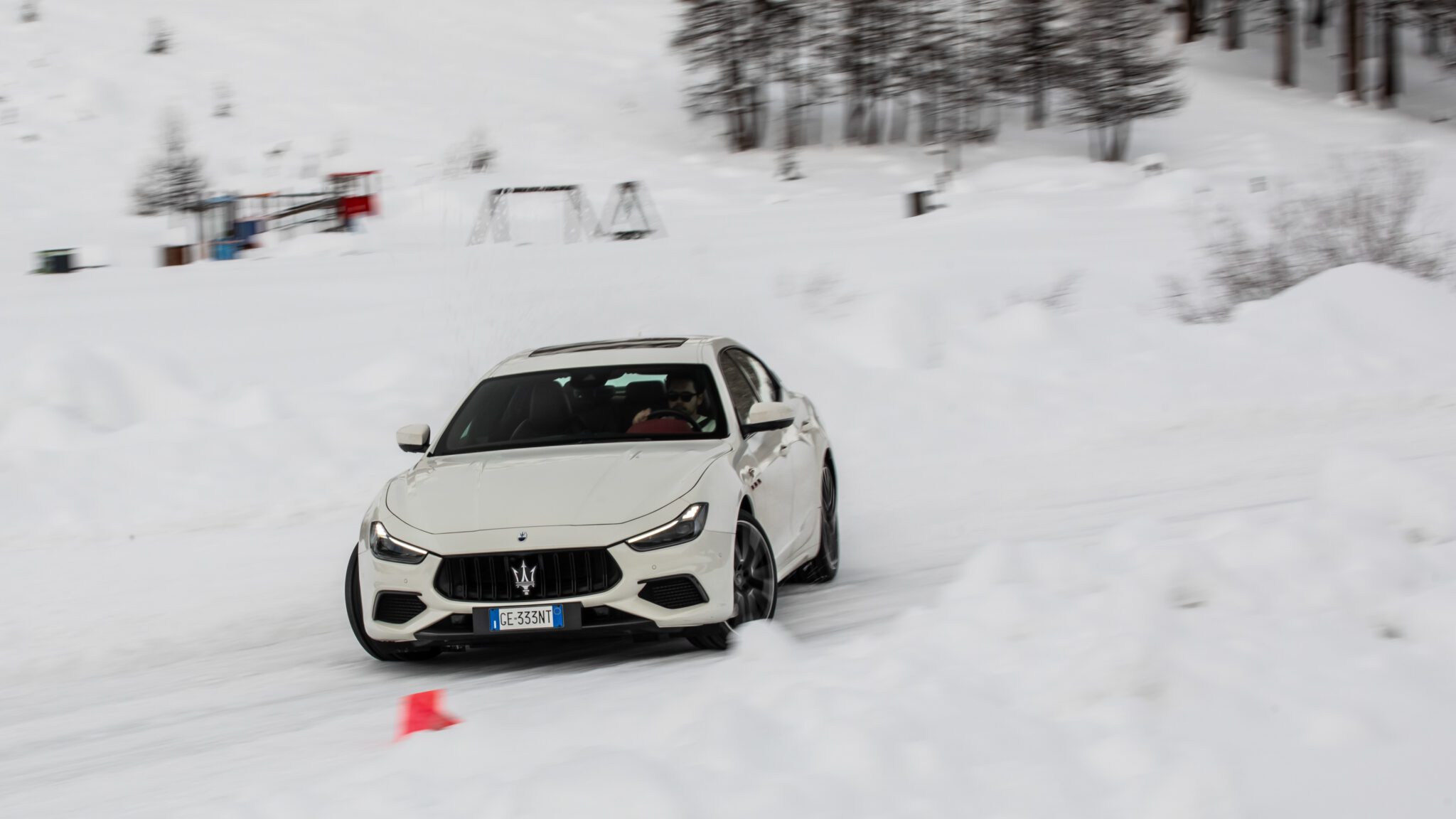
Into turn three, a near 180-degree bend, I made my first big mistake of the day. Too much throttle and slow hands meant I was facing backward before I knew what had happened. Whereas the QP is gentle and forgiving, the Ghibli is far trickier to handle. I pulled away gently so as not to dig myself in and quickly picked up the pace.
To my surprise, speed was the antidote to calm the Ghibli’s temperament. It turns out it’s far more at home going sideways but fast, where more aggressive throttle jabs line up better with the required quick steering inputs. A few laps after my discovery, I was sitting in a pool of sweat behind the Ghibli’s leather-wrapped wheel, but I’d connected the bends lap after lap without putting so much as a scratch on its pearlescent white paint. A voice over the radio said it was time to exit. Feeling like I got away with murder, I obliged.
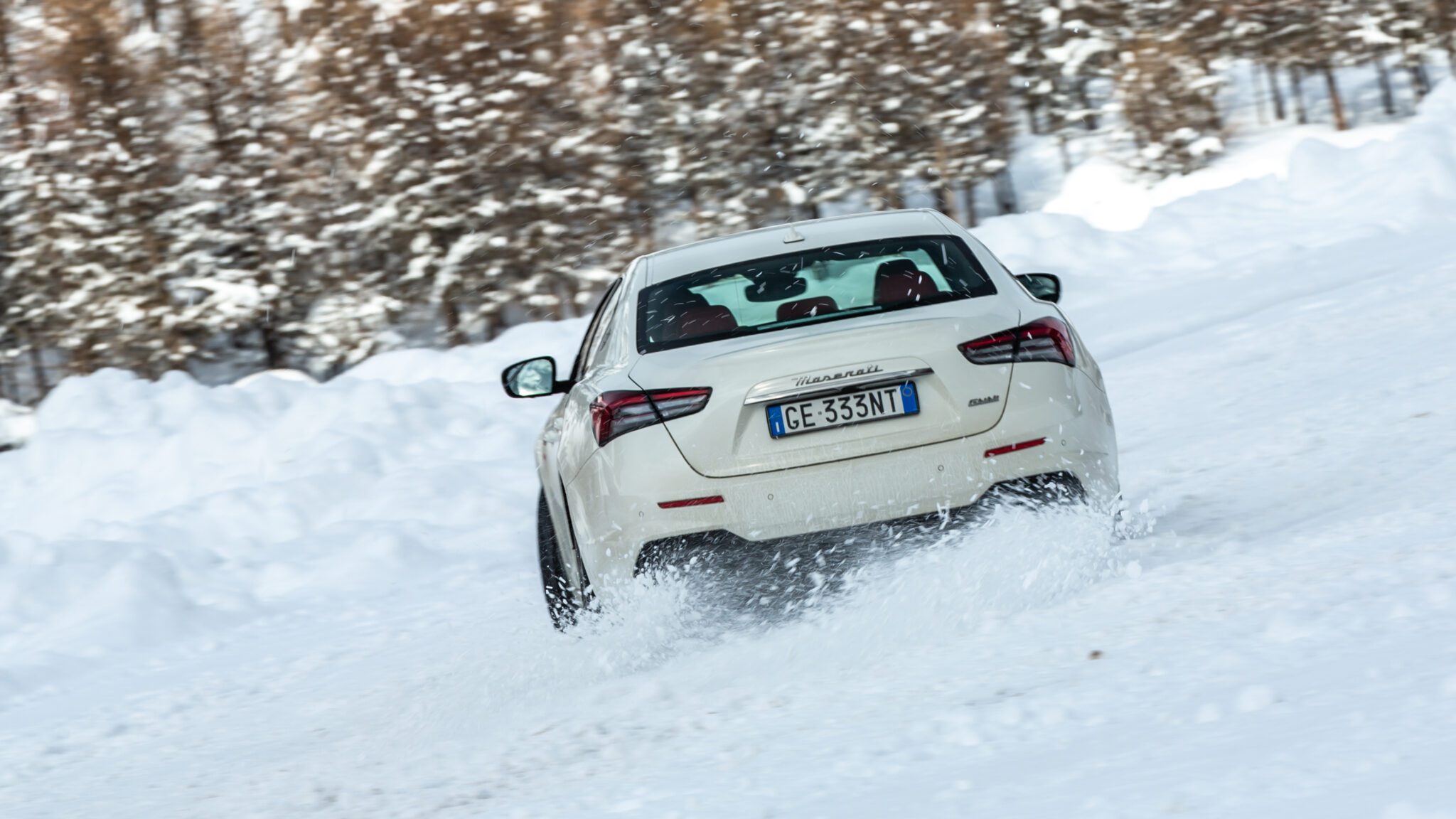
As I cooled off in the icy Livigno weather, a Maserati representative tossed me the keys to the only Levante Ultima on site and programmed a drive route in its nav. Although mechanically identical to a standard Trofeo, the Ultima is part of the last batch of V8-powered SUVs the Italian carmaker plans to build, 103 in Nero Assoluto and 103 in Blu Royale.
As you might expect, the 103 figure is significant as it denotes the internal product code for the 1959 5000 GT Scià di Persia. Essentially a 3500 equipped with a 5.0-liter version of a 450S race car’s V8, Maserati built it at the request of the then Shah of Persia. More importantly, it paved the way for road-going eight-cylinder Maseratis, a legacy that ends in just a few weeks.
Alongside the limited Levante, Maserati unveiled the Ghibli 334 Ultima, which it plans to build 103 units of, all finished in a stunningly deep shade of Blu di Persia to commemorate its eight-cylinder powerplant. The extra digits in its name are a nod to its 208 mph (334 kph) top speed, up by five mph over a standard Trofeo, but just enough for the Ultima to take the title of world’s fastest sedan. Maserati achieved these improved stats despite not modifying its powertrain; instead, it opted for new tires and reworked aero components.
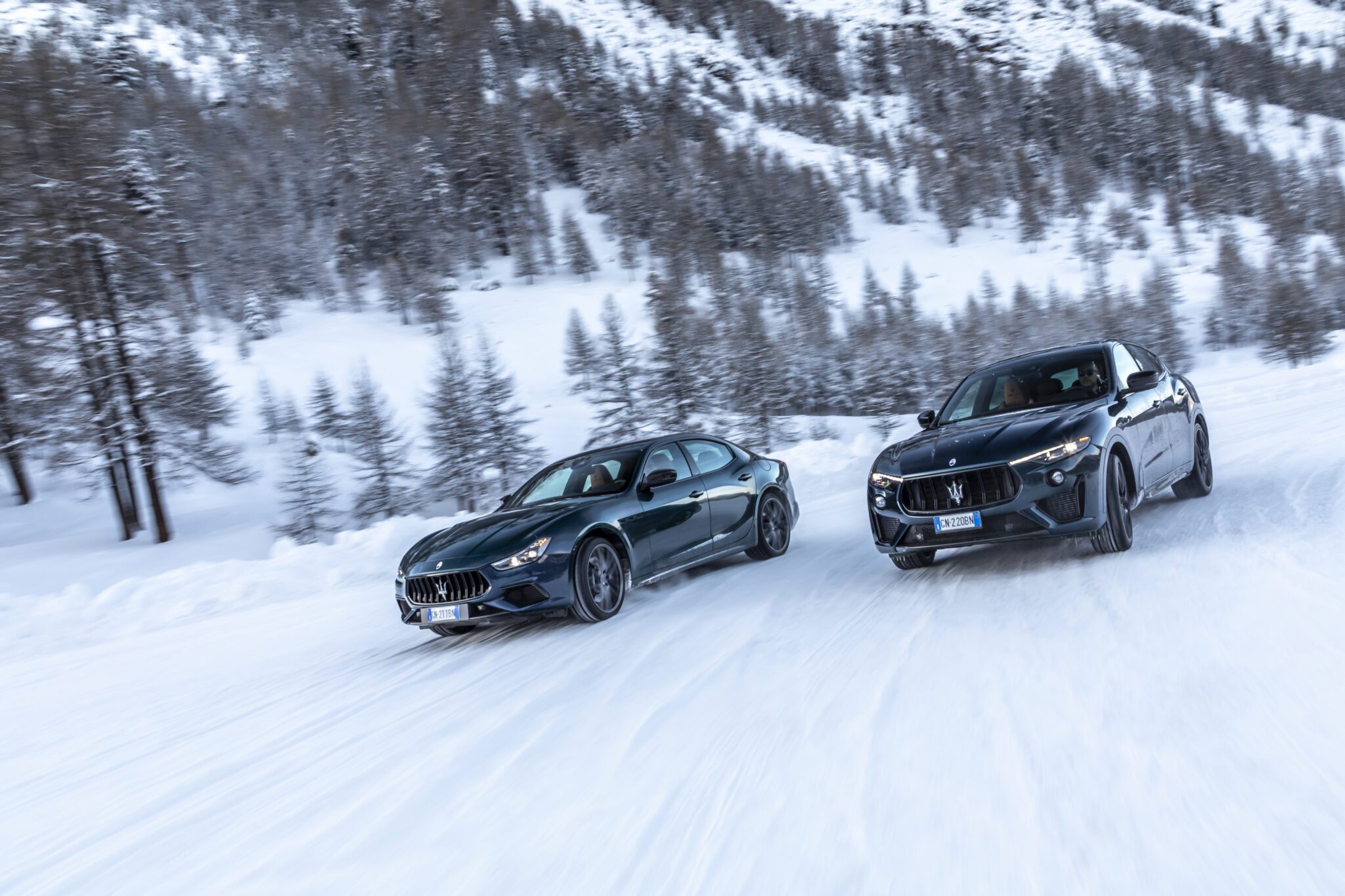
Back in the SUV, moving leisurely through Livignio’s wet and icy roads, I couldn’t help but wonder how this high-riding Maserati would stack up against the sedans on the track. Unfortunately, the carmaker’s engineers told us early on that this one-of-103 Levante would have to stick to the road as it’s the only one owned by the factory, and an unplanned detour into a snow bank would be a bad day for all involved.
I made my way back to the track, and even as I went around for more laps in the sedans, I couldn’t help but wonder about the Levante. See, despite sending power to all four wheels, unlike the Ghibli and the QP, this SUV counts on a rear-biased AWD system, meaning that in its most aggressive Corsa mode, the bulk of its 572-hp output should go straight to the back with only a tiny percentage reaching its front end. In other words, blending plenty of power out back with added traction up front should make it ideal for snowy sideways antics.
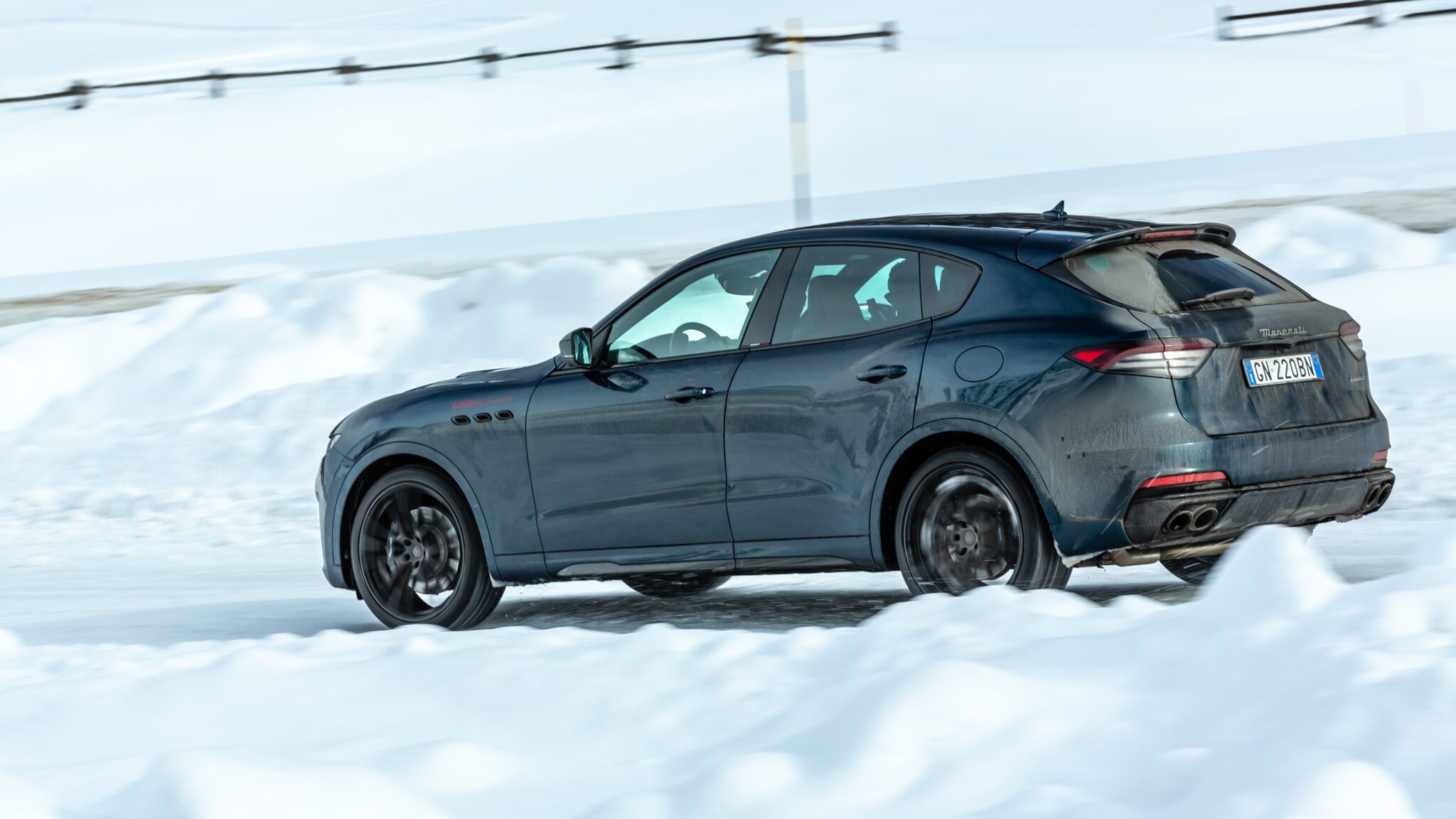
Eager to show off their creation, Maserati’s engineers doubled back on their earlier reservations and fetched the Ultima for a handful of hot laps, but there was a twist. For this final stint in this collector’s item of a car, Maserati’s Head of PR & Communications for the Americas, Matt Rindone, would ride shotgun with a fellow journalist friend in the back seat.
I tackled turn one at a higher speed than in the sedans, anticipating the extra grip from the Levante’s AWD system. I mashed the gas, and the revs soared as this 5,000-pound SUV carrying three grown men came around with the Ghibli’s speed but the QP’s controllability. Unlike in the sedans, however, I could never fully lift my right foot off the go pedal, or it would instinctively want to grip up and straighten out.
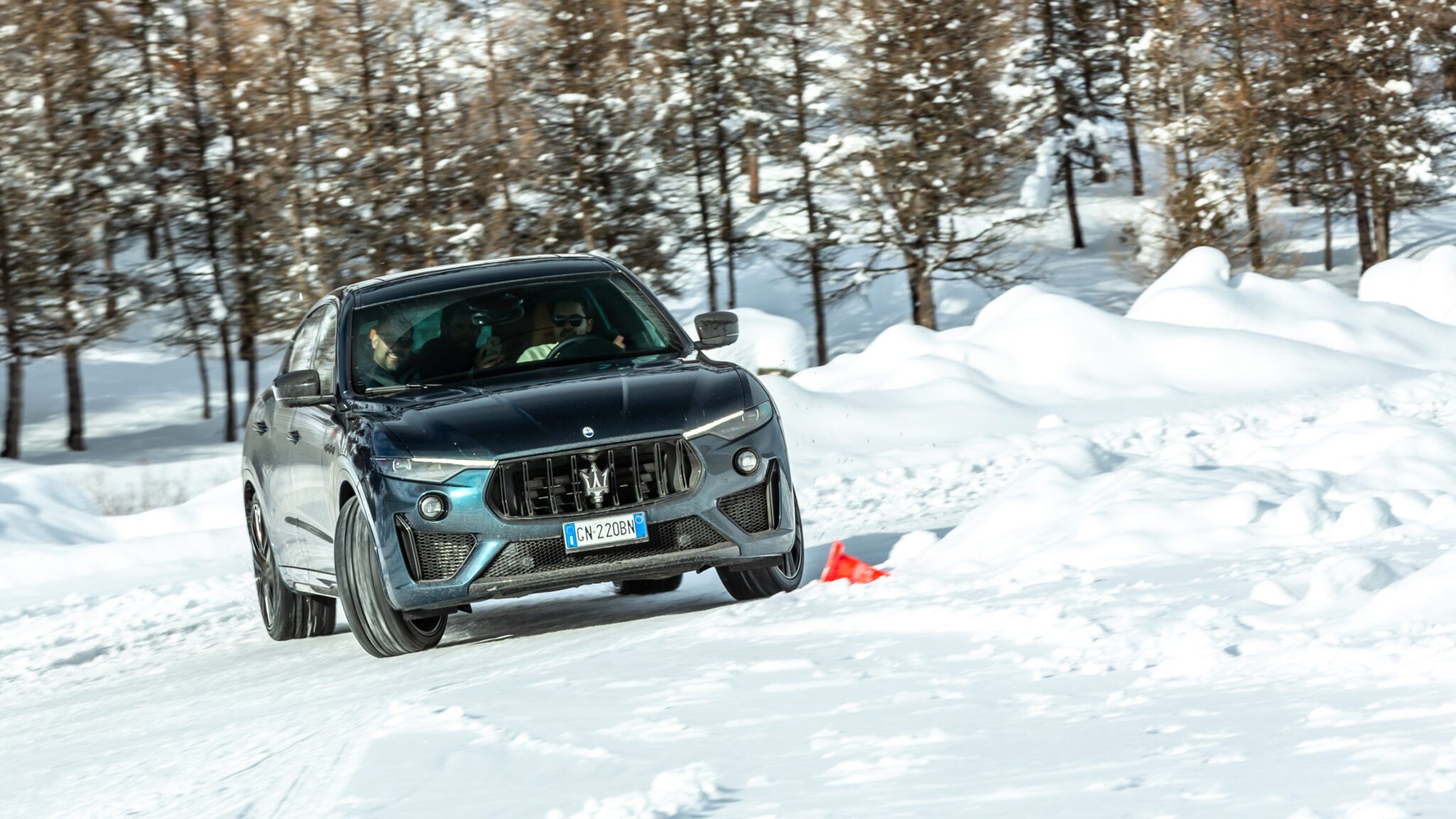
As we moved to connect turns two and the 180-degree loop that is turn three, I kept my foot in it, and the Levante rewarded us with beautifully controllable drifts. The Ultima had performed better than expected, and much to the relief of Matt and the awaiting engineers, it returned to the track’s edge in one unblemished piece. By the time the sun began to set, I had lapped the Ghiaccodromo over 30 times in all three cars.
During my snowy stints, the Trofeos mostly showcased how a great engine can make or break a car. It is, after all, central to the driving experience, and the trio’s 3.8-liter twin-turbocharged V8 is a masterpiece. It revs quickly, makes consistent power to redline, and sounds fantastic at full tilt.
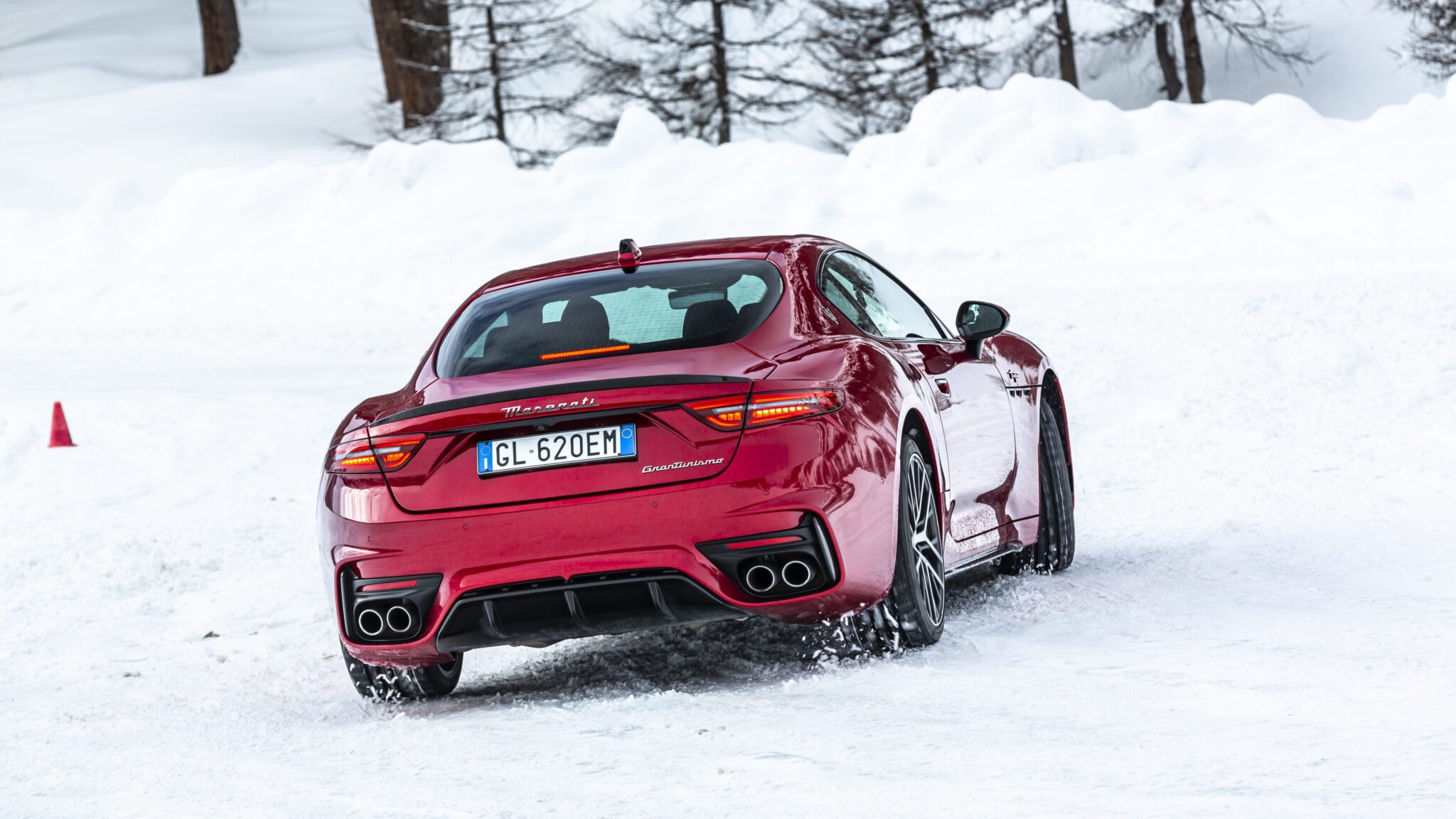
Yet simultaneously, Maserati’s outgoing range showcases how much the Italian carmaker is poised to change. In between runs, I managed to sneak some laps in a GranTurismo Trofeo, an all-wheel drive grand tourer powered by the new Nettuno V6. Compared to the old guard, the GT, although visually similar, feels like the product of a completely different company. What it lacks in cylinder count, it makes up for with quick and precise steering, instant response from its engine, and a nicely balanced chassis.
However, despite its added precision, I couldn’t wait to hop back into the Ghibli or the QP for more laps. Although they may not match the GT’s improved handling characteristics, they make up for it with great charm and old-school character. More importantly, their retirement presents a unique challenge for their maker: how do you ensure that the electric Folgores that will ultimately replace them offer the same level of charisma? With the end of V8 production signaling the imminent arrival of a fresh crop of EVs, it seems we won’t have to wait long to find out.

